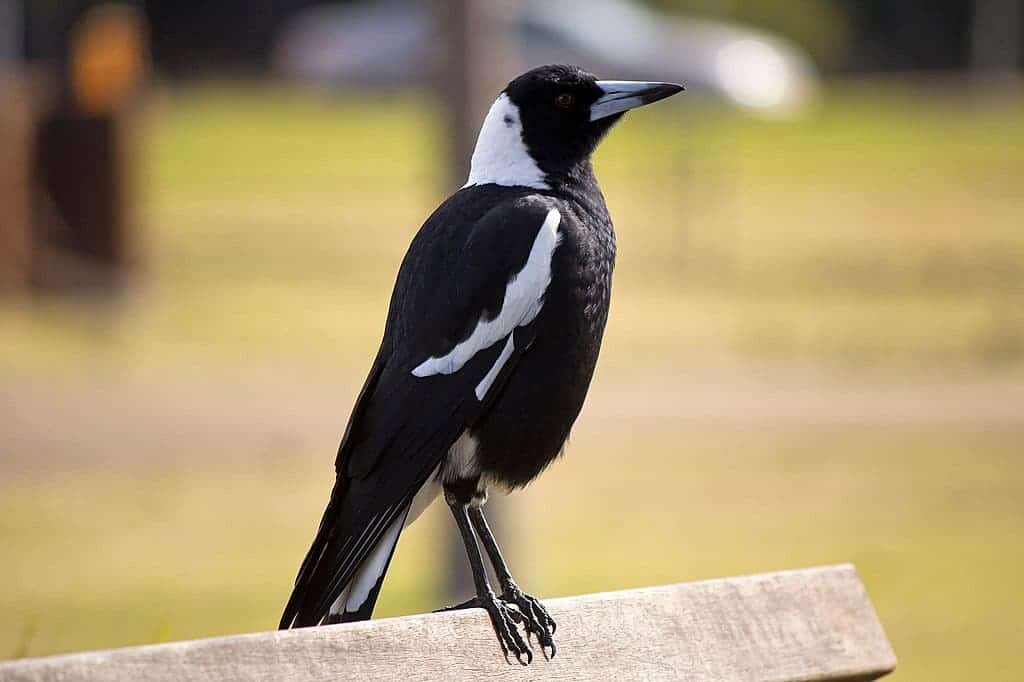Many birds that live together cooperate with each other to ensure and enhance the survival and safety of the group. Magpies are no exception, as some scientists who were testing new types of tracking devices for birds would learn. The crafty birds helped each other to remove the devices, much to the surprise of the researchers. But what they lost in GPS trackers and hours of fieldwork, the researchers gained ten-fold in their understanding of these remarkable social species.

The magpie is a relatively large bird (about 300 grams) native to Australia, omnipresent across the continent. It lives in small social groups, occupying and strongly defending a single territory. Although it’s an abundant species, not much is known about its movement, social interaction within and between family groups, and spatial and temporal range.
A group of researchers from the University of the Sunshine Coast wanted to further learn about the movement and social dynamics of these very intelligent birds while testing a new tracking device. But things didn’t go as planned. “The birds outsmarted us,” Dominique Potvin, an animal ecologist and study co-author, wrote in a blog post.
“The magpies began showing evidence of cooperative ‘rescue’ behaviour to help each other remove the tracker,” Potvin wrote. “While we’re familiar with magpies being intelligent and social creatures, this was the first instance we knew of that showed this type of seemingly altruistic behaviour: helping another member of the group.”
A very clever group of birds
Most trackers are usually too big to be used on small and medium-sized birds. There are some smaller trackers but they are limited in the amount of data they can store or their battery life. That’s why Potvin and the group of researchers were excited with their new, state-of-the-art tracker, which weighs less than one gram and is capable of re-charge wirelessly.
For their study, the researchers trained a group of magpies (Gymnorhina tibicen) to visit an outdoor feeding station. Five of these birds were fitted with the device. A harness held the tracker tight and to remove it, you would need a “good pair of scissors or a magnet,” according to Potvin. But things didn’t go as planned. Apparently, a friend’s crafty beak will do.
Only 10 minutes after fitting the fifth and last tracker, an adult female without a tracker started to help a younger bird to remove the harness – eventually succeeding. This pattern was repeated in the following hours, with almost all trackers of the experiment removed. By the third day, the dominant male had its tracker dismantled.
“We don’t know if it was the same individual helping each other or if they shared duties, but we had never read about any other bird cooperating in this way to remove tracking devices,” Potvin wrote in the blog post. “The birds needed to problem solve, possibly testing at pulling and snipping at different sections of the harness with their bill.”
The researchers said they didn’t expect the magpies to see the tracker as some sort of parasite that had to be removed. But that’s what happened. There’s only one similar example of this type of behavior ever recorded. The Seychelles warblers (Acrocephalus sechellensis) were seen helping release others in the group from sticky seed clusters.
While the experiment failed, the researchers highlighted the importance of tracking magpies. They are very vulnerable to heatwaves, which are becoming more common and intense amid the climate crisis. A recent study found that the survival rate of magpie chicks amid heatwaves is as low as 10%, with higher temperatures also affecting their cognitive performance.
The (failed) study can be accessed here.


